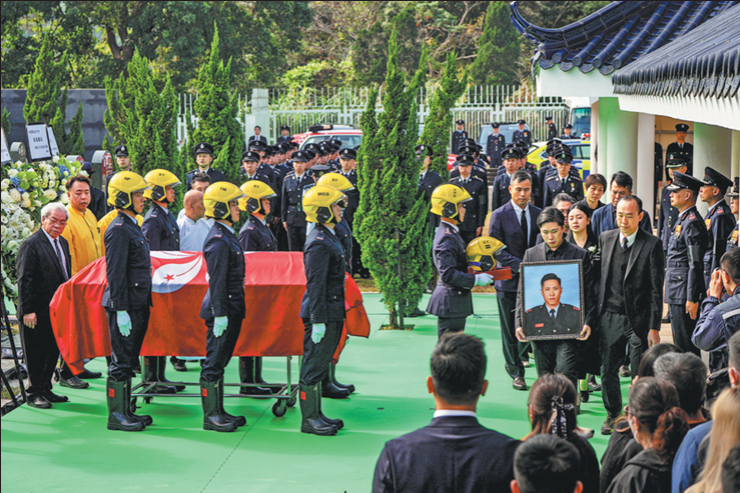Chinese astronauts leave space station for Earth
By Zhao Lei | chinadaily.com.cn | Updated: 2024-04-30 08:47
The Shenzhou XVII mission crew will soon return to Earth after a six-month mission, according to the China Manned Space Agency.
The Shenzhou XVII spacecraft, carrying the three outgoing astronauts — mission commander Senior Colonel Tang Hongbo, Lieutenant Colonel Tang Shengjie and Lieutenant Colonel Jiang Xinlin — left the Tiangong space station at 8:43 am Tuesday and has been on a return journey, according to the agency.
In the next six months, the Tiangong station will be manned by the Shenzhou XVIII trio, headed by Senior Colonel Ye Guangfu, who arrived at the colossal flying outpost on Friday morning.
Before setting out on their return trip, Tang Hongbo's team handed over their work to the new crew and sorted and transferred materials between the station and their spaceship.
In the following hours, the Shenzhou XVII vessel will re-enter the atmosphere under guidance from ground controllers and will land on the Dongfeng Landing Site in the Inner Mongolia autonomous region, according to the agency.
The Shenzhou XVII astronauts, who are the sixth crew to inhabit the Tiangong space station, took over the space station in late October from their peers in the Shenzhou XVI mission.
After this mission, Tang Hongbo will have stayed 279 days in orbit, extending his lead as the Chinese astronaut to have spent the longest time in space.
Tang made his first journey into space in June 2021, on the three-month Shenzhou XII mission, becoming one of the space station's first inhabitants. During that mission, he spent 92 days and four hours in orbit.
During the Shenzhou XVII mission, the crew conducted a total of 84 scientific experiments and technological tests in fields, including life science, space medicine and new materials.
More than 200 pieces of samples have been created through these experiments and tests and will be sent back to Earth with the Shenzhou XVII vessel.
The astronauts also carried out two spacewalks that completed the first extravehicular repair operation for the Tiangong, according to the agency.
























